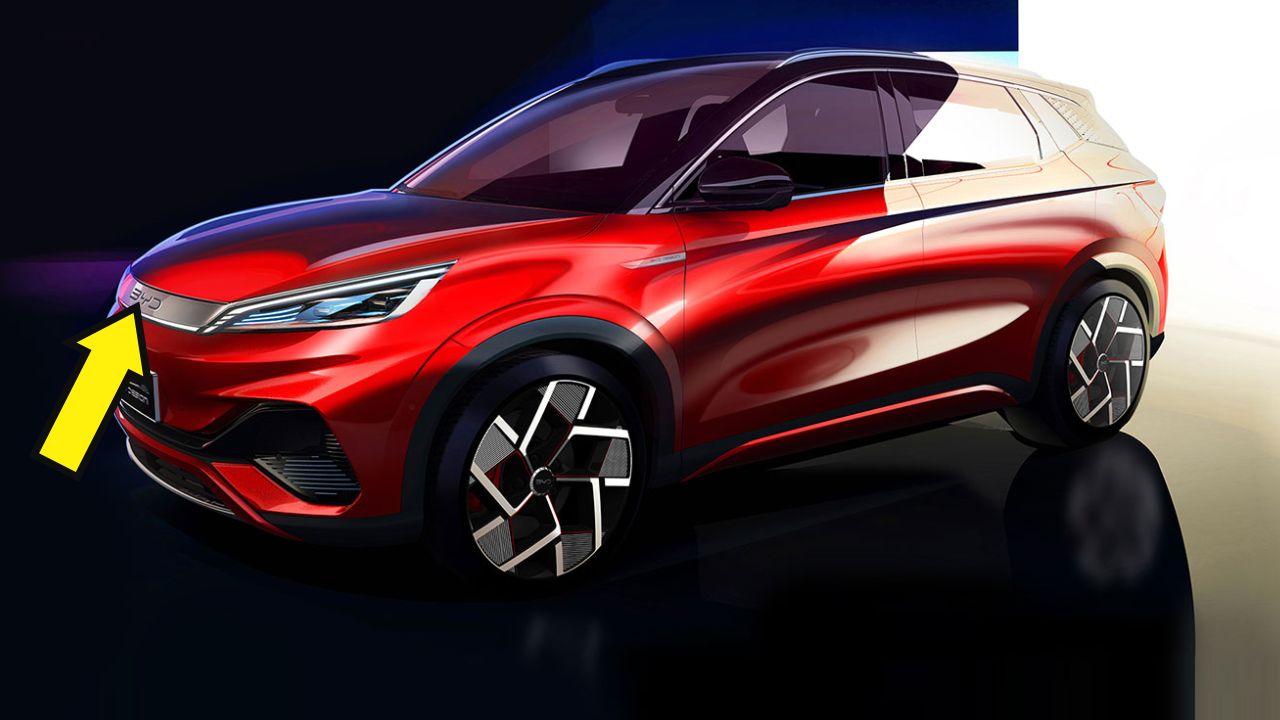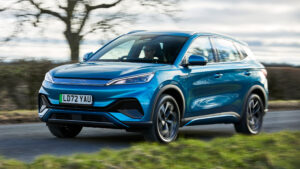The Australian electric vehicle landscape has just experienced a seismic shift, and it’s coming from an unexpected direction. Chinese automotive giant BYD has thrown down the gauntlet with aggressive price reductions across its popular Atto 3 electric SUV lineup, fundamentally reshaping what Australians can expect to pay for zero-emission transportation.
This isn’t just another routine pricing adjustment – it’s a calculated move that could accelerate Australia’s transition to electric mobility in ways we haven’t seen before. With the new Essential model starting at just $39,990 before on-road costs, BYD has positioned the Atto 3 as one of the most accessible electric SUVs on Australian roads.
A Game-Changing Price Revolution
When you walk into a BYD dealership today, you’ll encounter pricing that would have seemed impossible just months ago. The introduction of the Atto 3 Essential represents a $4,500 reduction compared to the outgoing Standard Range model, while the Premium variant has seen its price trimmed by $2,509 to $44,990.
These aren’t token gestures – they’re substantial savings that put electric vehicle ownership within reach of thousands more Australian families. The Essential model’s sub-$40,000 starting price creates a compelling alternative to traditional petrol SUVs, particularly when you factor in the long-term savings on fuel and maintenance.
What’s Driving These Bold Price Cuts?
BYD’s aggressive pricing strategy stems from multiple converging factors reshaping the global automotive industry. The company has achieved remarkable economies of scale, producing over 4.27 million electric and hybrid vehicles in 2024 alone. This massive production volume allows BYD to offer competitive pricing while maintaining healthy profit margins.
The competitive landscape in Australia has intensified dramatically, with Tesla maintaining its market dominance while new players like XPeng, Deepal, and Leapmotor prepare to enter the Australian market. BYD recognizes that establishing a strong foothold now requires bold moves, and pricing is their primary weapon.
Currency fluctuations and improved battery technology have also contributed to cost reductions. Lithium iron phosphate (LFP) batteries, which BYD uses extensively, have become significantly more affordable to produce, enabling the company to pass savings on to consumers.
Essential vs Premium: Understanding Your Options
The 2025 Atto 3 lineup presents two distinct approaches to electric SUV ownership, each targeting different buyer priorities and budgets.
Atto 3 Essential: Maximum Value
At $39,990, the Essential model makes several strategic compromises to achieve its attractive price point. You’ll get 17-inch alloy wheels instead of the 18-inch units found on the Premium, and the infotainment screen downsizes from 15.6 inches to 12.8 inches. The audio system drops from eight speakers to six, and the interior adopts a single-tone black scheme rather than the blue-and-black combination available in higher trims.
More significantly, the Essential eliminates features like the panoramic sunroof, power tailgate, heated front seats, and LED rear reading lights. The battery capacity is 49.9kWh, providing a WLTP-rated range of 345 kilometers – adequate for most urban and suburban driving patterns.
Atto 3 Premium: Enhanced Experience
The Premium model at $44,990 retains the larger 60.48kWh battery pack, extending range to 420 kilometers. This additional 75 kilometers might seem modest, but it’s psychologically significant for range-anxious buyers and practically important for longer journeys.
Premium buyers also enjoy the full complement of comfort and convenience features, including the panoramic sunroof that transforms the cabin’s ambiance, heated front seats for winter comfort, and the larger infotainment display that serves as the vehicle’s digital command center.
Technology and Performance That Delivers
Regardless of which variant you choose, both Atto 3 models share impressive technological foundations that demonstrate how far electric vehicles have evolved. The single front-mounted motor produces 150kW of power and 310Nm of torque, delivering brisk acceleration and refined urban performance.
The charging capabilities deserve particular attention. Both models support 7kW AC charging for overnight home charging, while DC fast charging reaches 70kW for the Essential and 88kW for the Premium. These speeds enable practical long-distance travel, with charging stops of 30-45 minutes being sufficient for most journeys.
Vehicle-to-load (V2L) functionality adds unexpected versatility, allowing the Atto 3 to power external devices through a standard power board adapter. This feature has proven particularly valuable for camping enthusiasts and tradespeople who need portable power sources.
Safety and Build Quality
BYD hasn’t compromised on safety to achieve these aggressive price points. The Atto 3 maintains its five-star ANCAP safety rating, supported by a comprehensive suite of active safety technologies including autonomous emergency braking, lane departure warning, and adaptive cruise control.
The build quality reflects BYD’s integration of traditional automotive manufacturing with cutting-edge battery technology. The company’s “Blade Battery” technology, based on lithium iron phosphate chemistry, prioritizes safety and longevity over maximum energy density.
Market Impact and Competition
These price reductions arrive at a pivotal moment for Australia’s electric vehicle market. Tesla continues dominating premium segments, but BYD’s aggressive pricing directly challenges the mid-market where most Australian families make purchasing decisions.
The Atto 3 Essential’s $39,990 price point creates uncomfortable pressure for established players. The MG ZS EV, previously considered the value leader in electric SUVs, suddenly appears less competitive. Traditional automotive brands offering hybrid alternatives now face genuine electric competition at comparable price points.
Government Incentives Amplify Savings
State-based electric vehicle incentives further enhance the Atto 3’s value proposition. Victorian buyers can access rebates reducing effective purchase prices, while other states offer registration exemptions and stamp duty reductions. These incentives, combined with BYD’s price cuts, create unprecedented affordability for electric SUV ownership.
The federal government’s fringe benefits tax exemption for electric vehicles purchased through novated leases provides additional savings for salary packaging arrangements, making the total cost of ownership even more attractive for many buyers.
Ownership Experience and Long-Term Value
Beyond the initial purchase price, BYD’s ownership proposition includes several elements that enhance long-term value. The company provides a six-year, 150,000-kilometer vehicle warranty alongside an eight-year, 160,000-kilometer battery warranty guaranteeing at least 70% capacity retention.
Service costs remain competitive with traditional vehicles, though the reduced maintenance requirements of electric drivetrains provide ongoing savings. BYD’s expanding dealer network across Australia ensures service accessibility, addressing a common concern among potential electric vehicle buyers.
The residual value picture for electric vehicles continues evolving, but BYD’s market position and the Atto 3’s popularity suggest reasonable depreciation patterns. As charging infrastructure expands and electric vehicle adoption accelerates, well-positioned models like the Atto 3 should maintain their appeal in the used car market.
Looking Forward: The Broader Implications
BYD’s pricing strategy represents more than a simple marketing tactic – it’s a fundamental shift in how electric vehicles compete with traditional powertrains. By achieving price parity with comparable petrol SUVs while offering superior technology and lower operating costs, the Atto 3 demonstrates that the electric transition has reached a tipping point.
This development pressures other manufacturers to respond, potentially triggering a beneficial cycle of price competition that accelerates electric vehicle adoption across Australia. Government emissions targets become more achievable when electric vehicles offer genuine value propositions rather than requiring financial sacrifices from buyers.
The success of BYD’s strategy will influence product planning across the industry, potentially encouraging more aggressive pricing from both established manufacturers and emerging electric vehicle specialists entering the Australian market.
Frequently Asked Questions
What’s the difference between the Essential and Premium Atto 3 models? The Essential model saves $5,000 but loses features like the panoramic sunroof, heated seats, larger touchscreen, and has a smaller battery with 75km less range, while the Premium includes all premium features and the longer-range battery pack.
How do the new Atto 3 prices compare to petrol SUVs? The Atto 3 Essential at $39,990 competes directly with mid-range petrol SUVs, while offering lower running costs, and when compared to a 2025 Nissan Qashqai Ti Hybrid at $52,355, the Atto 3 Premium represents significant savings.
What warranty coverage does BYD provide with the Atto 3? BYD offers a comprehensive six-year/150,000km vehicle warranty plus an eight-year/160,000km battery warranty that guarantees the battery will retain at least 70% of its original capacity throughout the warranty period.


